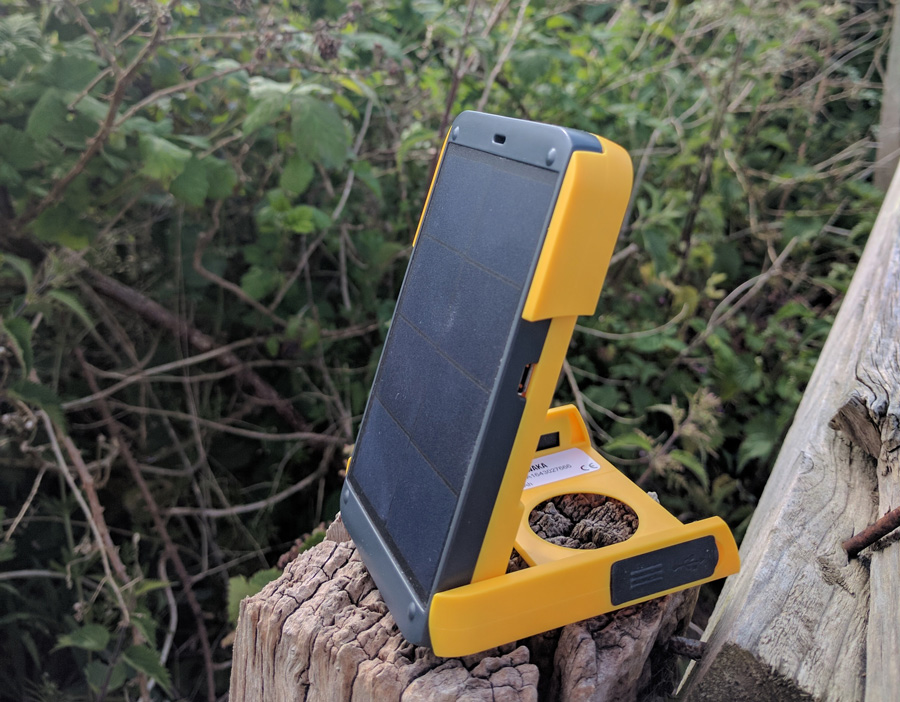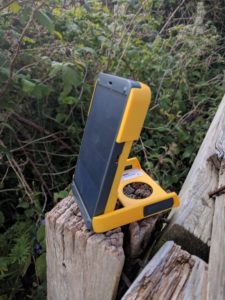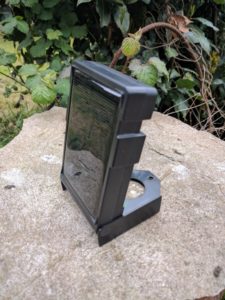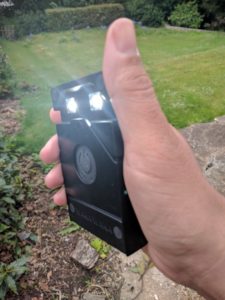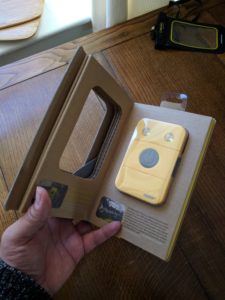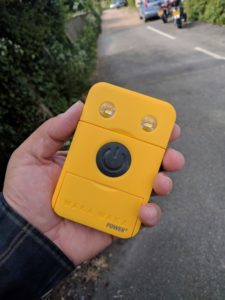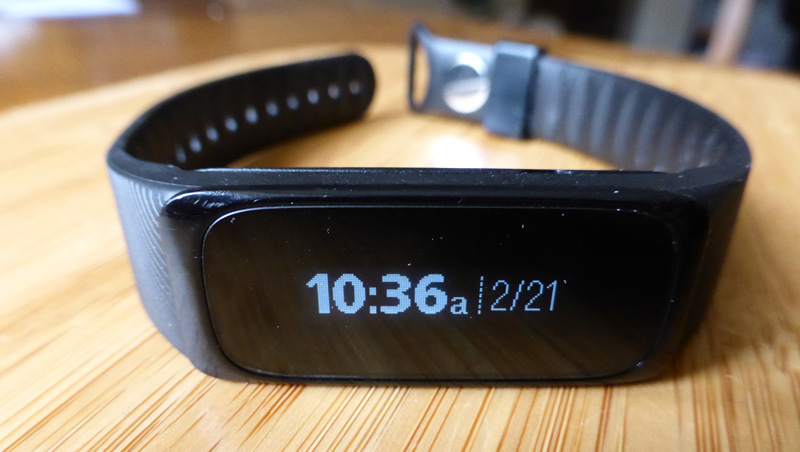Review: WakaWaka Power+ and Light
- Complaining about the Mainland - 17th August, 2024
- New island designation – is it just greenwash? - 26th April, 2024
- Police and Crime Commissioners – a solution or a problem? - 21st April, 2024
I recently went on holiday for a week to the New Forest – not everso far, I’ll admit, but for me, that counts as an overseas trip. We stayed at Sandy Balls holiday park (yes really) on the western edge of the National Park, right by the Avon river valley.
Knowing I was going to be staying in a holiday park, and likely to be doing some walking in a more rural place than I normally hang out, I took with me a couple of new bits of kit that I’ve recently acquired. The WakaWaka charger and light are solar-powered devices, one is a combo of phone charger and LED torch, and the other is just a torch. I left behind my normal 10000mAh charging brick and took these two relatively light gadgets instead.
Charging up with solar power
The WakaWaka special feature is the amazingly sensitive solar panel on each device. They both work the same, with one side of the blocky gadget covered almost entirely in a naked solar film that seems to somehow drink up the sunlight even in the dullest sun. See the video below – I tried out the torch as the sun was almost setting, about six weeks ago (so late March). Amazingly, the charging light was blinking even as the sun was sinking below the horizon. Both devices in my experience will charge up entirely from part full in a day or so, which whilst hardly an intensive test is not inconsistent with the manufacturers claim of “50% full on a typical sunny day” for the Power+, or 80% full for the Light. It might be a bit harder if you were walking all day, because you couldn’t really leave your WakaWaka in a charging position too easily, but if you have a shelf or dashboard to leave it on, you’ve got a solar-powered gadget charged up pretty quickly. Still, my longest walks on holiday were to the pub and to nearby Fordingbridge, and neither of those took all day! Both devices can actually be charged much more quickly from a USB if needs be, so if you’re in a vehicle or somewhere else with electricity there’s always that option.
https://vimeo.com/215725250
Flashlights
The torches are the same on both devices, and they work extremely well. Perhaps I should call them flashlights, which is what the literature calls these transatlantic branded gadgets, and on Amazon, the Light is bizarrely dubbed “Waka Waka Unisex Solar Flashlight” Since when are torches gendered?
Both have twin LEDS with adjustable brightness from 5 to 75 lumens. The brightest setting would probably be visible from space, and the dullest one is plenty bright enough for night walking once your eyes have adapted. In fact, if anything, I might have preferred a dimmer setting even than the very feeble one that comes as standard, so as to allow you to walk safely over rough terrain without affecting your night vision too much. The leaflet claims that the light on the Power+ charger would burn for 10 hours at maximum brightness, and an amazing 150 hours at the dimmest. Needless to say I didn’t test these, but suffice to say that a fully charged WakaWaka of either type will keep you well lit for quite some time.
Phone charger
The WakaWaka Power+ charger device has the added facility of an extra USB port which provides power out. This can be used to charge phones or similar devices. It certainly worked for me, but bearing in mind this is a 2200mAh charger it was nowhere near enough to fully charge my phone, which is a fairly large one. However, I wasn’t using it in any organised way – if I’d wanted to conserve phone battery and turned it on only when needed, I suspect I could have managed for several days with just solar power to keep me going. The other big advantage of a small charger like this is that it is smaller and much lighter than the one I normally carry on journeys. At 200g this can slip into a pocket almost unnoticed (the torch alone is even lighter).
Conclusions
PRO: These things really do charge up in pretty much any sunlight, even in the winter in the UK. They are light to carry, and the torch is powerful and lasts for ages. They’re well designed and entirely easy to use, as you’d hope for such a simple functionality. Both come with a copious amount of literature about how by buying WakaWaka you’re helping various projects in developing countries.
CON: The device charger has a limited capacity, and takes more than a day to charge up fully. The solar film is quite delicate, and needs protecting if it’s knocking around in a bag. The flashlight is pretty bulky for what it is, but that’s necessary to support the charging surface.
OVERALL: Very nice devices to use. Probably not designed for genuine wilderness wanderers who want to be online all the time – but how often is that likely to happen to you in the UK? WakaWaka could certainly keep you powered up for a very long time if you just used your phone for a few hours a day, and it was reasonably sunny. And if you just want a quick top-up to your battery, or a handy torch to shine you to the pub and back, these are perfect.
BUY:

